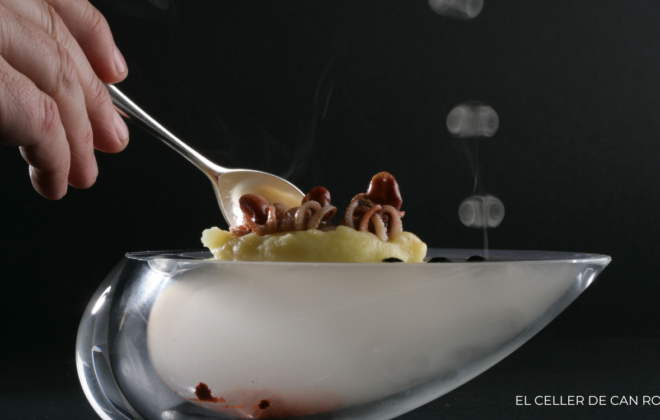GET THE PERFECT COLD SMOKING TECHNIQUE, STEP BY STEP
Smoking in the kitchen is a technique that is very easy to master, but a few details must be taken into account in order to carry out the flavourings correctly and safely for the customer. Cold or instant smoking is carried out just before service and is normally accompanied by a bell.
In this blog you can learn more about smoking in the kitchen. The smoking of pieces that have to go through a smoking and maturation process.
Contents
What are the 5 steps to smoke correctly?
The smoking process depends on many factors, and involves the knowledge and integration of several techniques. In detail, by subjecting food to the action of smoke:
- We facilitate its preservation by dehydration, eliminating the germs responsible for putrefaction by means of a chemical reaction.
- We give the food a characteristic and special flavor and color by communicating the substances that are released from the wood
The smoking process considers three factors:
- Smoke temperature
- Smoke humidity
- Origin of the smoke
Step 1. Dry-brining
Dry-brining is used when the pieces to be smoked are large, such as pork legs or loins, and brine is used when small pieces such as fish are to be smoked. Dry-brining consists of applying a thick layer of dry, granulated, or refined sea salt over the entire surface of the meat, taking care that no area is left uncovered and deposited in a non-metallic container with a lid since the PH drops notably and can react with metals. Finally, an excess of salt is applied to cover and guarantee that it fulfills its dehydrating function during the appropriate time, which depends on the size of the pieces and the type of meat to be salted.
For example, a trout weighing approximately 600 grams should be salted for approximately 8 to 10 hours, while a pork loin weighing approximately 2.5 to 3 kilograms should be salted for three days.
Recommended dry-brining mix (use approximately 250 gr of the mix for each kg of meat):
- 1 kg salt
- 2 kg of sugar
- ½ kg of garlic salt or flavored salts
- ½ kg of curing salt, nitro salt or sodium nitrate (NaNO3)
- herbs (laurel, thyme, and marjoram)
The sugar prevents the product from being too salty and gives a slightly sweet taste. Garlic salt gives the meat its flavor and sodium nitrate, in addition to improving the flavor of the meat, gives it a desirable light pink color. Finally, herbs also transmit their odors and flavors to the meat.
Step 2. Wet-brining
Wet-brining consists of preparing a concentrated salt solution (70 or 80% salt solution or 114 grams of salt per liter of water) or until a potato or an egg floats. Sugar, garlic salt, and/or herbs for seasoning can be added to the wet brine.
Step 3. Rinse
This step consists of removing the meat from the salt and submerging it in plain water for one to five hours. Depending on the size of the pieces, the water extracts the excess salt and slightly rehydrates the meat. After this time, the product is removed from the water and left to drain for a few minutes.
Step 4. Seasoning
In order to give the meat a spicy flavor, protect it from insects that can oviposit on it and worm it with their larvae, and prevent the establishment of bacteria and fungi due to the antibiotic effect of its essential oils, the entire surface of the meat is covered with a thick layer of a mixture of black pepper powder, coarse pepper, and paprika or smoked paprika. This step is facilitated by the fact that the meat contains a certain degree of humidity that allows the powders to adhere to its surface.
Step 5. Maturation
The last step is the simplest. It consists of removing the meats from the smoker and hanging them in the air for a few days so that they lose the high concentrations of aromatic elements acquired inside the smoker, and the flavors are balanced from the first time the product is consumed.
This process, however simple, is not without care, as it must be carried out in cool, shaded and well-ventilated places, as well as in times when the relative humidity of the air is low, as otherwise the food could gain humidity instead of losing it and over time develop some fungi or bacteria which, as well as giving a bad appearance, can deteriorate its quality. In the case of fish such as salmon, we can do eta maturation in the refrigerator in a bucket and ventilate it from time to time.





